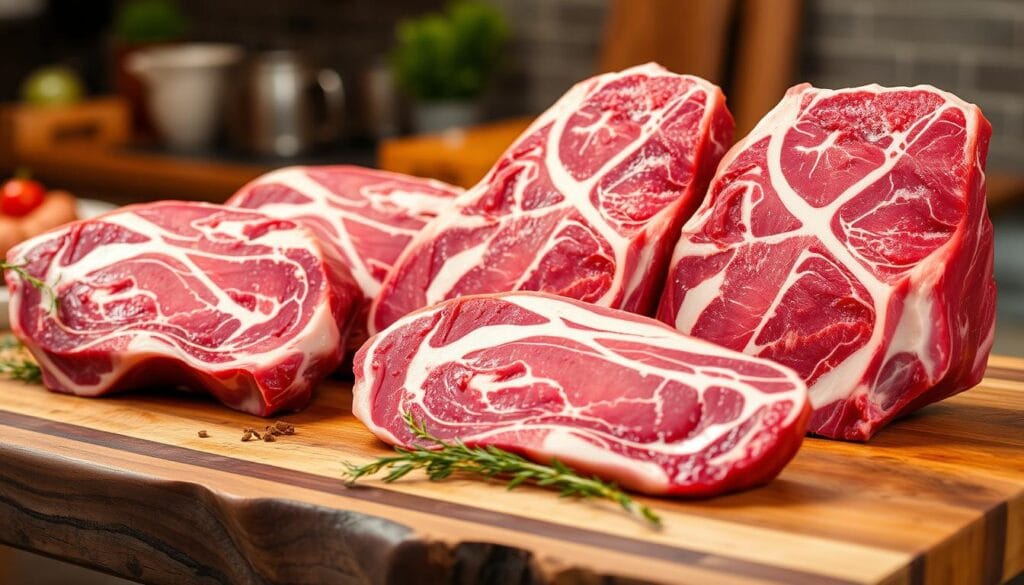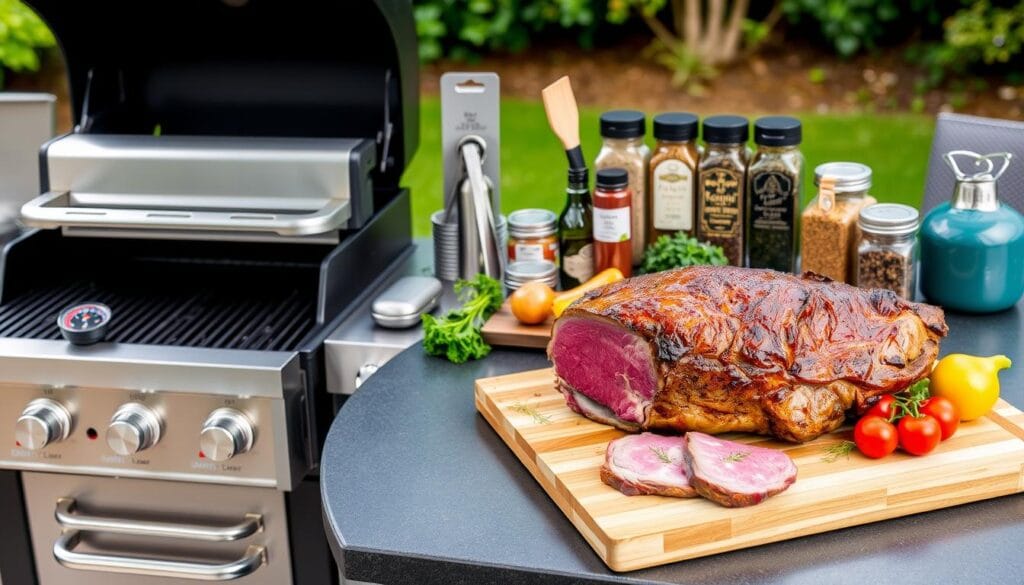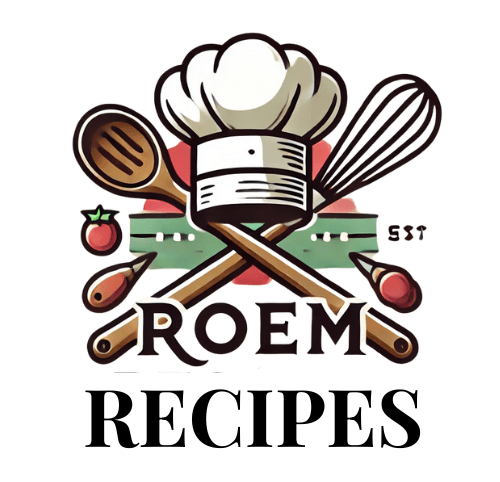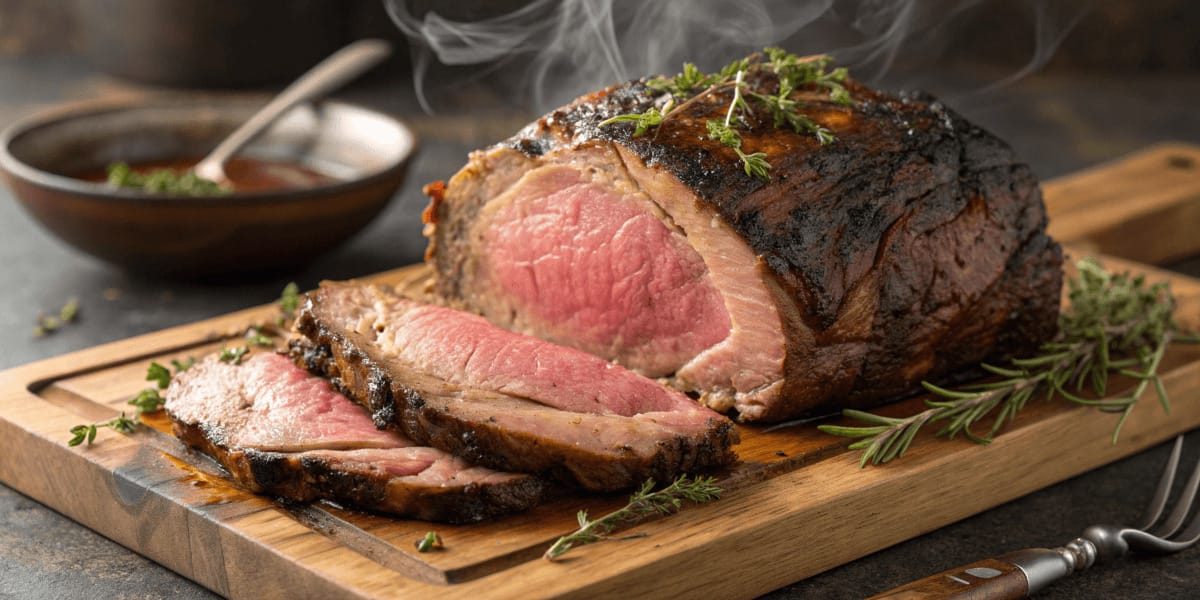The smell of a grilled prime rib roast can turn a simple meal into a special event. As a BBQ lover, I’ve found that making the perfect prime rib on the grill is more than cooking. It’s about creating a moment that brings people together.
Starting your journey to master the grilled prime rib roast is easy. This guide is for everyone, from new backyard grillers to seasoned BBQ pros. It will show you how to make a rib roast on the grill that will wow even the pickiest eaters.
The key to amazing prime rib is knowing about meat selection, prep, and cooking. From picking the right USDA grade to mastering your grilling, each step is important. It ensures a juicy and tasty roast that will have everyone asking for more.
Butcher BBQ experts say great grilled prime rib roast is about more than just meat. It’s about passion, skill, and turning a simple cut into a work of art. Get ready to take your grilling to the next level and make a feast that celebrates the rich flavors of prime rib.
Understanding Prime Rib: Grades and Selection Guide
Choosing the right prime rib can make your grilling experience amazing. The cut you pick affects the taste, tenderness, and fun of your meal.

USDA Prime vs. Choice Grade Differences
Prime rib comes in three USDA grades: Prime, Choice, and Select. The main difference is marbling, which is the fat inside the meat. This fat makes the meat juicy and flavorful.
- USDA Prime: Highest grade with exceptional marbling
- USDA Choice: Good marbling, slightly less tender
- USDA Select: Leaner, with minimal marbling
“Quality begins with selecting the right grade of meat” – Professional Chef’s Wisdom
Bone-in vs. Boneless Prime Rib Selection
Deciding between bone-in and boneless prime rib depends on your cooking style and how you want it to look.
| Bone-in Prime Rib | Boneless Prime Rib |
|---|---|
| More flavor | Easier to slice |
| Natural moisture retention | Uniform cooking |
| Attractive presentation | Simpler carving |
Calculating Prime Rib Portion Sizes
Figuring out the right prime rib size is key to avoid waste and hunger. A good rule is to plan for 1/2 to 1 pound per person. For a dinner party of six, aim for a 4-6 pound roast.
- 4-6 people: 4-6 pound roast
- 8-10 people: 8-10 pound roast
- Holiday gatherings: Plan for slightly more
Pro tip: If unsure, it’s better to have a bit more than not enough of this special beef.
Essential Equipment for Grilling Prime Rib Roast
To make a great prime rib roast, you need the right tools. Choosing top-notch grilling equipment is key. It ensures your prime rib turns out perfect every time.

- Digital meat thermometer
- Heavy-duty grill tongs
- Quality meat injector
- Sharp carving knife
- Heavy-duty aluminum foil
The digital meat thermometer is the most important tool. It helps you get the perfect internal temperature. This way, you avoid overcooking or undercooking your prime rib.
| Equipment | Purpose | Recommended Brand |
|---|---|---|
| Digital Meat Thermometer | Temperature monitoring | ThermoWorks Mk4 |
| Meat Injector | Flavor enhancement | Premiala Marinade Injector |
| Carving Knife | Precise meat cutting | Wüsthof Classic |
“The right tools transform good cooking into great cuisine.” – Professional Chef
Experts say to choose the best grilling tools for prime rib. Your equipment can make the difference between a good and an extraordinary meal.
Preparing Your Grilled Prime Rib Roast for Cooking
Getting your prime rib ready for grilling is all about the details. Your journey starts long before you put the meat on the grill. Each step is key to a delicious dish.
Expert Trimming Techniques
Keep a thin layer of fat on top for extra flavor and moisture. Use sharp shears or a boning knife to trim off excess fat. Aim for about 1/4 inch to baste well during cooking.
- Use clean, sharp butcher’s tools
- Maintain a consistent fat layer
- Remove any tough connective tissue
Strategic Seasoning and Rub Applications
Seasoning prime rib needs a smart plan. Mix a strong dry rub with kosher salt, black pepper, garlic powder, and herbs like thyme and rosemary. Pat the meat dry first to soak up more flavor.
“The secret to incredible prime rib is in the seasoning and preparation.” – Professional Grilling Expert
Room Temperature Resting Strategy
Resting prime rib before cooking is vital for even heat. Take the roast out of the fridge 30-45 minutes before grilling. This lets it warm up evenly, ensuring a perfect crust.
Pro tip: Cover the meat loosely with plastic wrap during resting. This keeps moisture in and the temperature right for cooking.
Perfect Temperature Control for Prime Rib Success
Mastering prime rib temperature control is key to a delicious grilled roast. Your digital meat thermometer is your best friend in this journey. The right grilling temperature can turn a simple meal into a special occasion.
Understanding temperature precision begins with knowing your target zones. Here’s a detailed breakdown of critical temperature points:
- Searing surface temperature: 400°F (204°C)
- Roasting temperature: 225°F (107°C)
- Recommended internal temperatures:
- Medium Rare: 125°F (52°C)
- Medium: 130°F (54°C)
“Temperature is the secret weapon in creating the perfect prime rib.” – Professional Chef
Keep an eye on your prime rib’s internal temperature while it cooks. This prevents overcooking and ensures it’s cooked just right. Remember, the meat will continue to cook as it rests, with internal temperatures rising:
| Doneness Level | Cooking Temperature | Resting Temperature Rise |
|---|---|---|
| Medium Rare | 125°F (52°C) | 130-134°F (55-57°C) |
| Medium | 130°F (54°C) | 135-140°F (58-60°C) |
Pro tip: Let your prime rib rest for 30 minutes after cooking. This step helps juices spread evenly and stabilizes internal temperatures.
By focusing on precise temperature control, you’ll make your prime rib truly special. This ensures a tender, flavorful roast every time.
Direct vs. Indirect Grilling Methods for Prime Rib
Choosing the right grilling method is key to a great prime rib. Knowing the difference between direct and indirect grilling can help you get that perfect roast every time.
Prime rib grilling methods include direct and indirect grilling. Each method has its own benefits for a delicious roast.
Setting Up Grill Zones
To grill prime rib, set up different heat zones:
- Direct heat zone: High-intensity area for searing
- Indirect heat zone: Lower temperature for slow cooking
- Transition zone: Moderate temperature for even cooking
Optimal Grill Temperature Settings
| Grilling Method | Temperature Range | Cooking Time per Pound |
|---|---|---|
| Direct Grilling | 400-450°F | 15-20 minutes |
| Indirect Grilling | 250-300°F | 20-25 minutes |
Flipping and Rotating Techniques
For even cooking, follow these tips:
- Rotate the roast every 30-45 minutes
- Use tongs to carefully flip the meat
- Check internal temperature frequently
“The key to perfect prime rib is patience and precise temperature control.” – Grilling Experts
Remember, cooking time for prime rib depends on its size and your desired doneness. A 4-pound prime rib takes about 2 hours and 45 minutes to reach medium-rare at 130°F.
Pro tip: Always use a meat thermometer to guarantee the perfect temperature, rather than relying solely on cooking time.
Internal Temperature Guide and Doneness Levels
Mastering the prime rib internal temperature is key to perfect doneness. Your digital meat thermometer is your most important tool in this journey.
Prime rib doneness levels vary with specific temperature ranges. Let’s look at the most popular serving temperatures:
- Rare: 120-129°F
- Bright red center
- Lukewarm throughout
- Medium Rare: 130-134°F
- Bright red center
- Pink edges
- Warm throughout
- Medium: 135-144°F
- Pink and warm throughout
- Medium Well: 145-154°F
- Slightly pink center
- Warm throughout
- Well Done: 155-164°F
- Very little pink
“The key to perfect prime rib is knowing when to pull it from the heat.” – Professional Chef
Pro tip: Remove your prime rib from the heat 5-10°F below your desired final temperature. This method ensures your meat reaches perfect doneness without overcooking.
Most restaurants and steak lovers prefer medium rare. It offers the best balance of tenderness and flavor. Always use a reliable meat thermometer for precision in your cooking.
Mastering the Resting and Carving Process
After grilling your prime rib roast, the last steps are key. Resting and carving right can make your meal unforgettable. It turns a good roast into a standout dish.
Resting Your Prime Rib to Perfection
Resting your prime rib is essential, not just a tip. It should rest for 15-20 minutes after cooking. This lets the juices spread evenly, making each slice tender and full of flavor.
- Cover the roast loosely with aluminum foil
- Place in a warm spot away from direct heat
- Let the meat rest at room temperature
Professional Carving Prime Rib Roast Techniques
Carving prime rib needs precision and the right tools. A sharp 9-12 inch carving knife with a Granton edge is best. It helps you get slices like a pro.
- Position the roast with the fatty side up
- Use a sharp knife with smooth, consistent strokes
- Slice against the grain for maximum tenderness
- Cut approximately ½-inch thick slices
“The art of carving is as important as the cooking itself.” – Professional Chef
By following these tips, you’ll make your grilled prime rib a showstopper. It will wow your dinner guests.
Common Grilling Mistakes to Avoid
Mastering prime rib grilling means avoiding key mistakes. These can ruin your expensive meat. Knowing these mistakes is key to a perfect roast.
Experts say to grill prime rib fat side up. This method lets the fat baste the meat. It makes the meat tender and flavorful.
- Temperature Control: Invest in a reliable meat thermometer to prevent overcooking
- Avoid opening the grill frequently, which disrupts consistent heat
- Never press down on the meat, as this forces out essential juices
- Use a combination of direct and indirect heat zones
“The difference between a good and great prime rib is often in the details of preparation and cooking technique.” – Professional Grilling Expert
Seasoning is another common mistake. Don’t over-season, as it can hide the beef’s natural taste. A simple mix of kosher salt and black pepper is best. Dry brining for 24 hours before cooking boosts flavor and tenderness.
Practice makes perfect. Start with simpler cuts and build your grilling skills. Avoiding these mistakes will help you make a memorable, delicious meal.
For more tips and variations on preparing prime rib, check out our detailed guide on Sous Vide Prime Rib Roast for a perfectly tender result. Curious about the differences between cuts? Explore our comparison of Prime Rib vs. Ribeye Roast to make the best choice for your next meal. If you’re shopping for quality, learn why the Costco Prime Rib Roast is a favorite for home cooks and chefs alike. These resources will elevate your prime rib expertise to new heights!
Conclusion
Grilling a prime rib roast is an art that needs skill and passion. It’s about choosing the right meat, controlling the temperature, and mastering grilling techniques. This way, you can turn a simple dinner into a memorable meal.
Start by picking the best cut of meat. USDA grades show the meat’s fat and age, affecting its taste and softness. Whether you go for a first or second cut, each has its own special qualities. Try different seasonings and grilling methods to find your own style.
Getting better at grilling prime rib takes practice. Focus on the meat’s internal temperature, resting time, and how you carve it. Begin with a sear at 400°F and then roast at about 225°F. With time and effort, you’ll make a prime rib that wows everyone.
Keep learning, invest in good tools, and be open to trying new things. Every time you grill a prime rib, you’ll get better. Your journey in cooking is exciting, and the tasty outcomes will be worth all the hard work.


3 thoughts on “Mastering the Art of Grilled Prime Rib Roast: A Flavorful Feast”